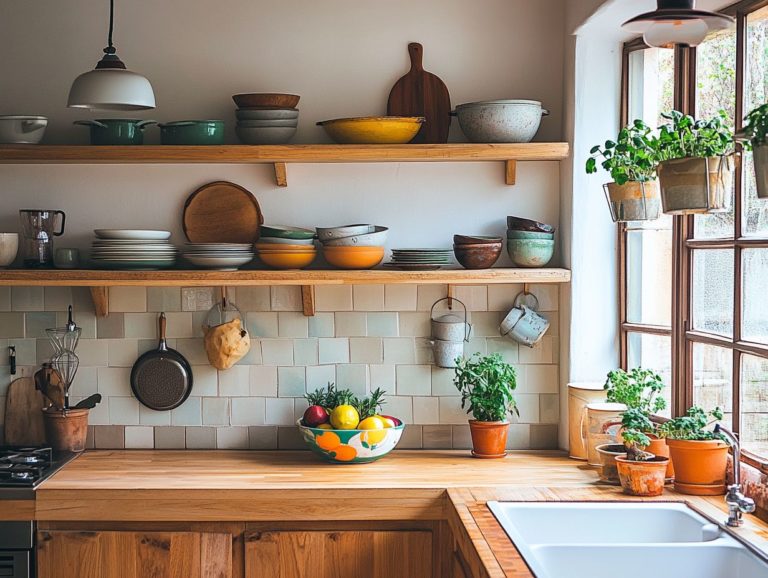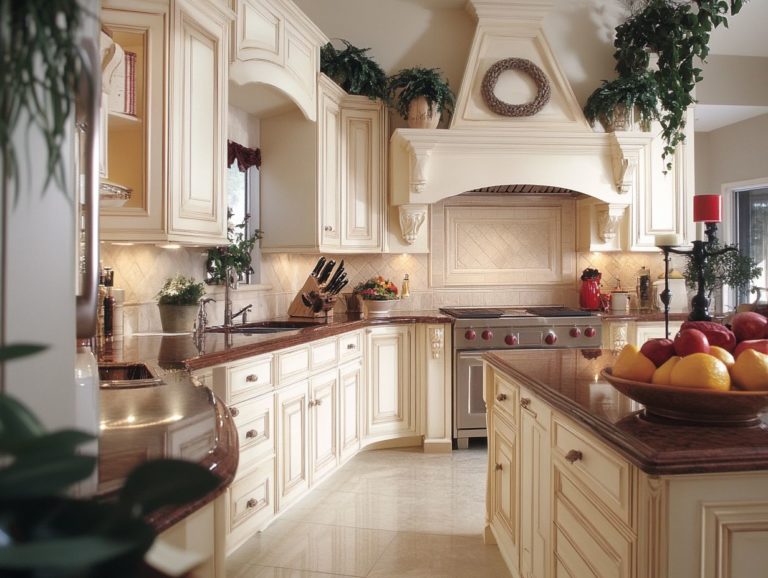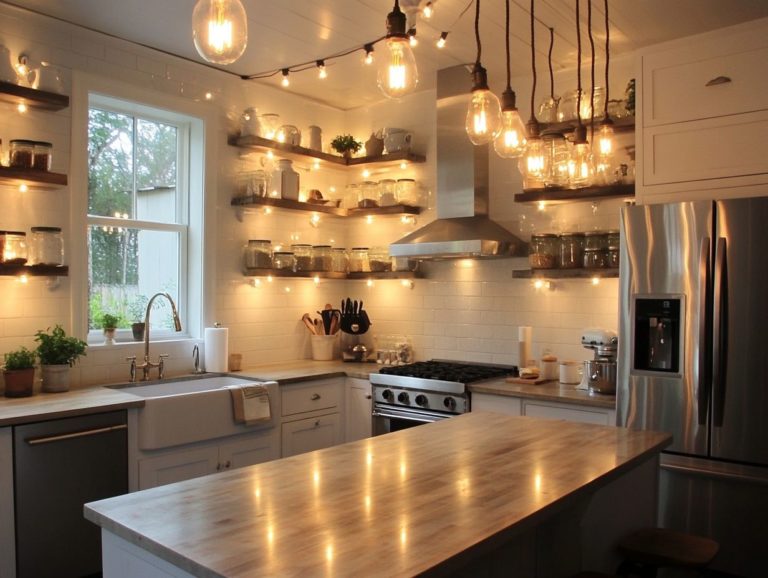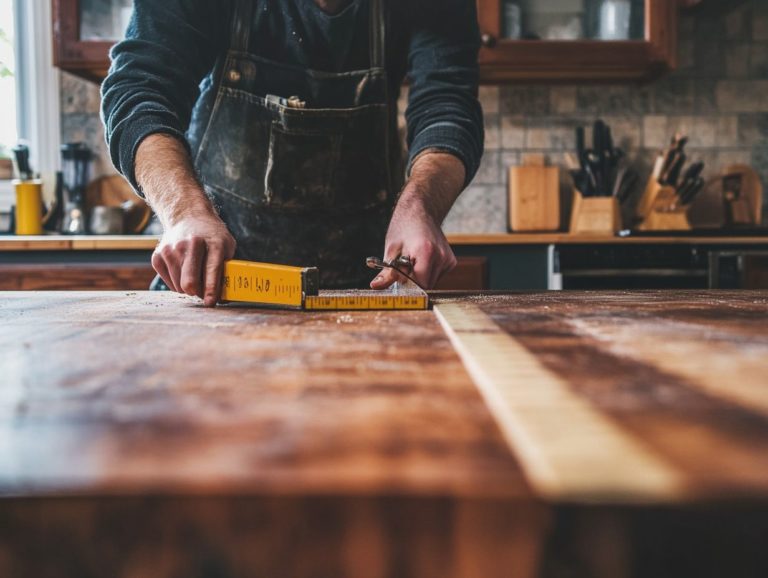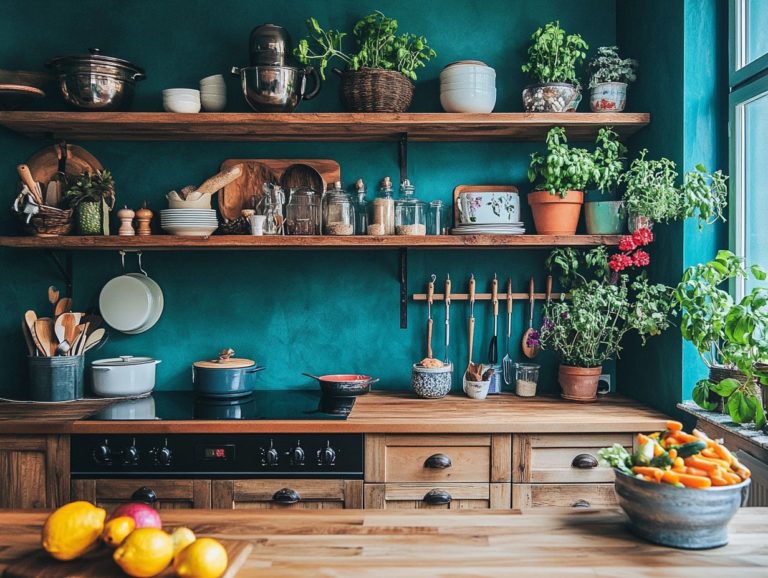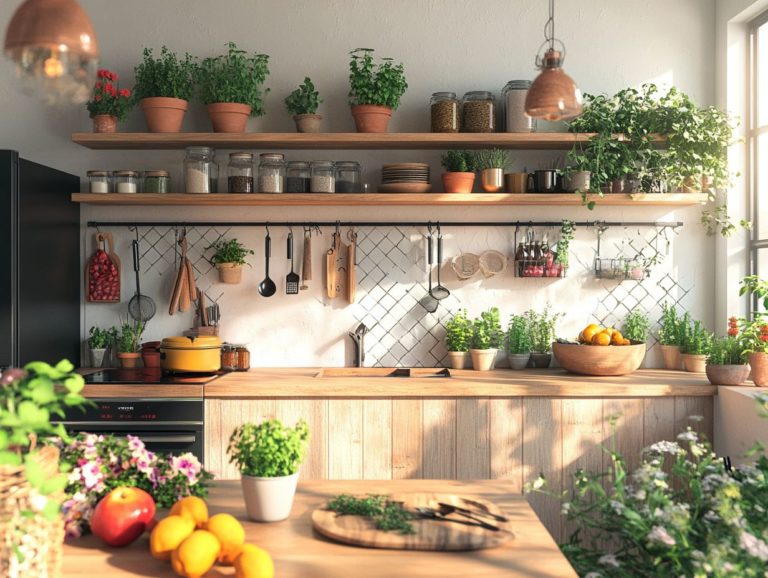How to Choose the Right Paint for Your Kitchen
Choosing the right paint for your kitchen can elevate the space into a vibrant hub of creativity and warmth. With a myriad of options at your fingertips, it’s crucial to consider factors such as color scheme, functionality, and durability. This ensures your walls can withstand the rigors of daily use.
This guide reveals the best paint options for your kitchen. You’ll discover invaluable tips on preparation, application, and maintenance to keep your kitchen looking its finest for years to come.
Let’s refresh your kitchen together now!
Contents
- Key Takeaways:
- Factors to Consider When Choosing Kitchen Paint
- Types of Paint for Kitchen Walls
- Preparation and Application Tips
- Maintaining Your Kitchen Paint
- Frequently Asked Questions
- What factors should I consider when choosing the right paint for my kitchen?
- Should I use a specific type of paint for my kitchen?
- What colors are best for a kitchen?
- Do I need to use a primer before painting my kitchen?
- How can I make my kitchen paint last longer?
- Can I use the same paint for my kitchen cabinets and walls?
Key Takeaways:

Consider the color scheme and design aesthetics of your kitchen before choosing a paint color.
Prioritize functionality and durability when selecting a type of paint for your kitchen walls, especially in high-moisture areas.
Proper preparation is crucial for keeping your kitchen paint looking fresh and clean.
Factors to Consider When Choosing Kitchen Paint
Selecting the perfect paint colors for your kitchen involves considering several key factors that are essential for creating a beautiful and cohesive look. This should resonate with your personal style.
You’ll want to take into account the existing colors in your home, the overall color palette you envision, and the warm atmosphere you’re aiming to cultivate for family meals.
These elements play a significant role in establishing the ideal tone and ambiance in this vital space. Making the right color choice can dramatically transform your kitchen, turning it into a welcoming hub for gathering, creativity, and connection.
Functionality and Durability
Selecting paint for your kitchen is about more than just aesthetics; it demands your attention to functionality and durability, especially considering the unique challenges of this often-bustling space.
With constant exposure to moisture, heat, and the inevitable splatters, choosing the right finish can truly elevate your experience. Moisture-resistant paints help prevent mold and mildew caused by dampness, safeguarding your walls while extending their lifespan.
Common finishes you might consider include:
- Matte: Offers a non-reflective appearance but can be trickier to clean.
- Glossy: Renowned for its shine and easy wipe-down capabilities, although it may reveal imperfections.
- Eggshell: Strikes a delightful balance with a subtle sheen that provides durability while being easy on the eyes.
Each of these options comes with its own set of advantages and potential drawbacks, shaping not only the kitchen’s look but also the maintenance effort required.
Color Scheme and Design
Choosing the right color scheme and design for your kitchen is crucial in creating a mood-enhancing and vibrant environment that elevates both the look and practicality of the space.
In contemporary kitchen design, your selection of hues can significantly shape not only the visual appeal but also the way certain elements interact with the natural light that pours in.
For example, warm tones like soft yellows or earthy terracottas can cultivate an inviting atmosphere, especially in smaller areas where warmth is desired. On the flip side, cooler shades such as crisp whites or soothing blues can foster a refreshing and serene ambiance, making them ideal for larger kitchens that thrive on openness.
Mixing these tones can lead to stunning results; think warm cabinetry paired with cool countertops to achieve that perfect balance.
Currently, bold accent colors are gaining popularity, adding a splash of personality against neutral backdrops. This demonstrates that even in a space dedicated to utility, creativity can truly take center stage.
Types of Paint for Kitchen Walls
When you set out to paint your kitchen walls, grasping the various types of paint available is essential for attaining the look you envision. It also ensures the longevity of your investment in home decor.
Latex Paint
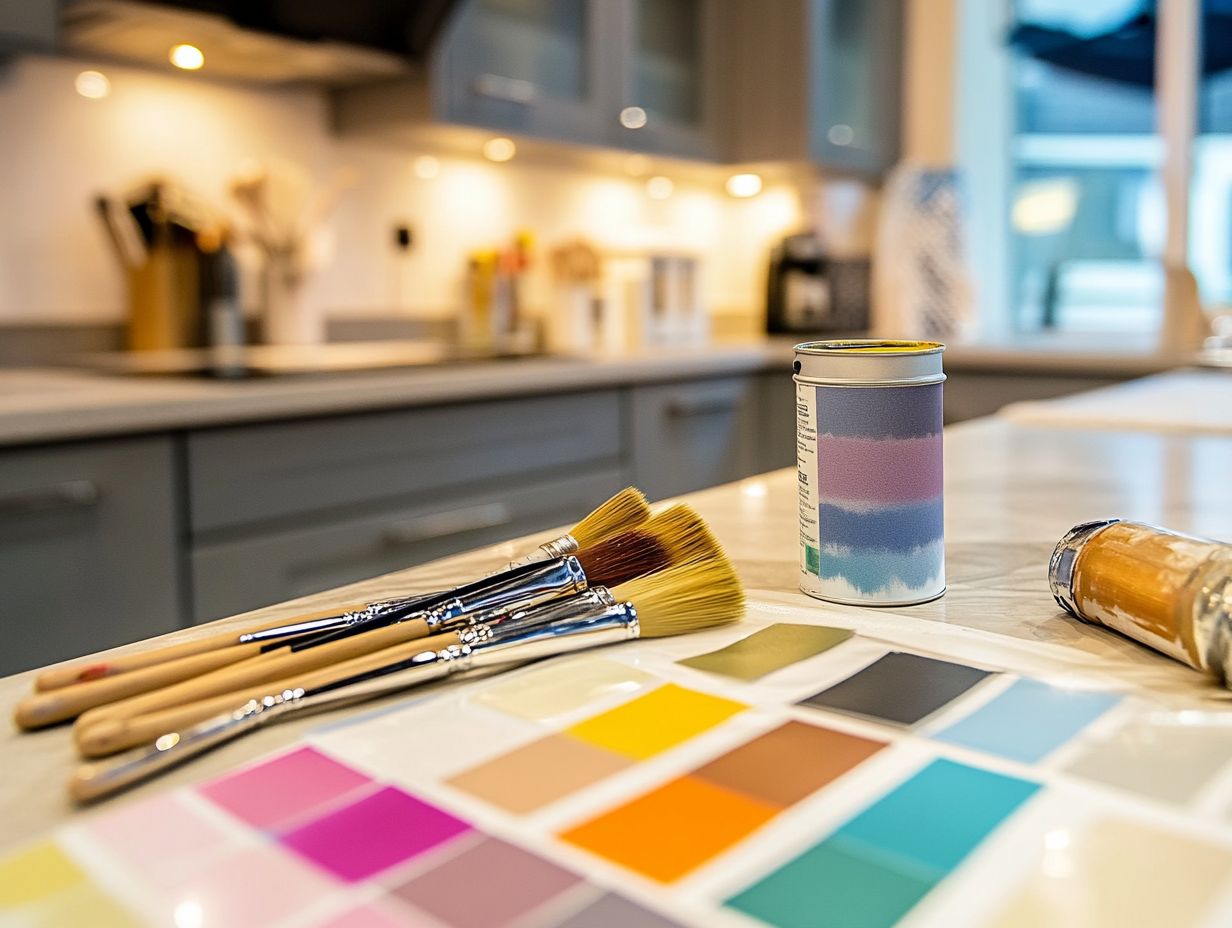
Latex paint stands out as a premier choice for kitchen walls. It’s perfect for high-traffic kitchen areas due to its exceptional durability and moisture-resistant qualities.
This versatile option also offers a smooth application process, enabling you to achieve professional-looking results without requiring extensive experience.
With its quick drying time, once you apply a coat, surfaces can be ready for additional handling within hours. This ensures minimal disruption in your bustling kitchen environment.
The clean-up process with latex paint is refreshingly straightforward. Usually, soap and water are all you need to address spills or splashes, making it an ideal solution for families where messes tend to be a frequent guest.
These features improve your efficiency. They also provide a beautiful and functional finish for your kitchen.
Oil-Based Paint
Oil-based paint is celebrated for its remarkable durability and glossy finish. It’s a top choice for your kitchen cabinets and trim that demand a strong, lasting coating.
This type of paint is designed to endure the daily challenges of cooking, spills, and general wear and tear. It ensures that your cabinetry maintains its fresh appearance for years to come.
Oil-based paints have longer drying times and stronger odors. This can make them challenging to use during your painting project.
While the high-gloss finish beautifully enhances your kitchen’s color palette by reflecting light and creating an elegant ambiance, it can also bring imperfections in the cabinetry’s surface into sharper focus.
Your choices in finish—ranging from satin to semi-gloss—can significantly influence the overall aesthetic and functionality of your kitchen. This provides various levels of shine that can seamlessly complement both modern and traditional designs alike.
Specialty Paints for High-Moisture Areas
Specialty paints crafted specifically for high-moisture areas are essential for your kitchen. They offer resistance to mold and better durability against steam and humidity.
When you apply them to walls and backsplashes, they help fend off mold growth and are far easier to clean than conventional paints. Don’t wait! Protect your kitchen with the right specialty paint today.
If you’re aiming to elevate the longevity of your kitchen, consider high-quality brands like Behr’s Premium Plus Ultra and Benjamin Moore’s Aura. These excel in moisture resistance.
Opting for products with satin or semi-gloss finishes can further boost durability. By investing in these specialized paints, you not only create a healthier kitchen environment but also achieve that polished look you desire.
Preparation and Application Tips
Ready to transform your kitchen? Proper prep and application are key to a stunning finish.
Cleaning and Priming the Walls
Cleaning and priming the walls before you embark on your painting journey are vital steps. They guarantee both durability and a flawless finish, especially in a kitchen where spills and stains are a daily reality.
Taking the time to meticulously clean the surfaces is essential. It removes any grease or food particles that could undermine the paint’s adhesion. Begin by wiping down the walls with warm, soapy water, then follow up with a vinegar solution to tackle any lingering grease.
Once you have a pristine canvas, choosing the right primer becomes paramount. Oil-based primers are often the go-to choice for kitchens, thanks to their robust sealing properties, while water-based primers offer ease of use and effectiveness.
By diligently preparing the walls through these steps, you ensure that the paint adheres better and can withstand the hustle and bustle of a lively kitchen. This not only extends the lifespan of your paint job but also keeps your kitchen looking attractive and inviting.
Tools and Techniques for Painting
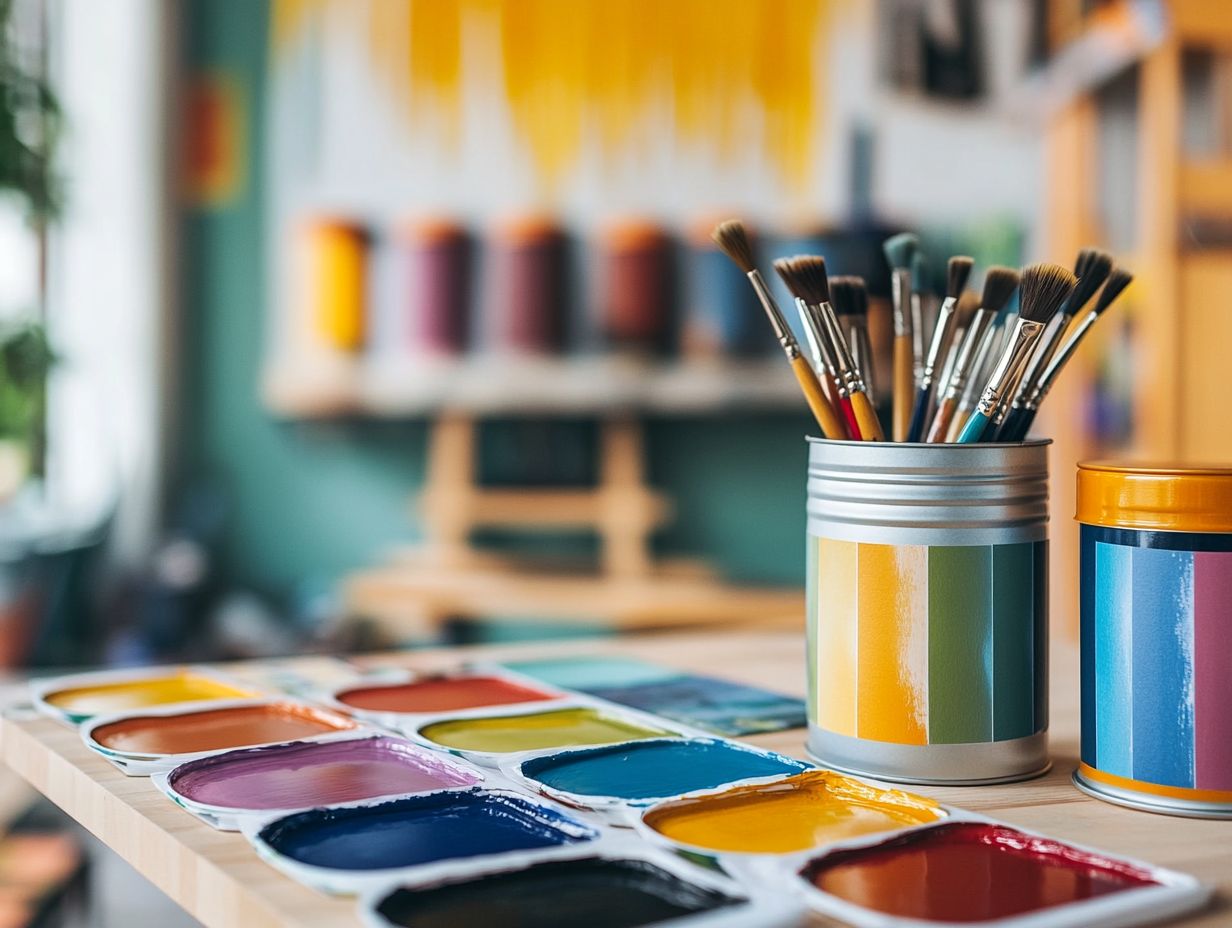
The right tools and techniques are essential for achieving a professional-looking finish in your kitchen. They transform it into a warm and inviting space for family meals and gatherings.
To begin, gather essential tools like high-quality brushes and rollers. These will help you apply paint precisely on large surfaces and intricate areas. A sturdy ladder is key for reaching higher spots, and a drop cloth will protect your floors and countertops from accidental spills.
Don’t forget painters’ tape! It’s your best friend for creating sharp lines and preventing paint bleed, ensuring those edges remain crisp and clean.
When applying the paint, techniques like cutting in with a brush before rolling can lead to a flawless finish. While tackling this project yourself is within your reach, consider hiring a professional painter. They can save you time and deliver superior results, handling any challenges during the process and ensuring a result you can be proud of.
Maintaining Your Kitchen Paint
Keeping your kitchen paint in good shape is essential. It helps maintain the fresh look and vibrant colors, making your kitchen inviting for years.
Cleaning and Touch-Ups
Regular cleaning and touch-ups help keep your paint looking fresh, especially in a bustling environment.
Given the frequent splashes and spills, it’s vital to adopt effective cleaning techniques. Start by using a gentle mixture of mild soap and warm water on a microfiber cloth. Harsh chemicals can strip away the shine and vibrancy you worked hard to achieve.
For tougher stains, a simple solution of equal parts vinegar and water can work wonders without causing damage.
When it’s time for touch-ups, always opt for the same type of paint. This ensures a consistent finish. Feather the edges of your touch-up to blend seamlessly with the surrounding areas, creating a polished appearance.
When to Repaint
Knowing when to repaint your kitchen is crucial for preserving both its aesthetic charm and functionality. Recognizing the signs for a fresh coat of paint can spare you from an outdated look.
Look out for these telltale signs:
- Noticeable fading from sun exposure,
- Unsightly chipping,
- Peeling paint that detracts from the overall allure of your space.
A change in your personal style might inspire your desire for a more modern atmosphere.
To breathe new life into your kitchen, consider exploring trending palettes like soft earth tones or vibrant blues. These can refresh the area and reflect your evolving taste. You can also enhance your kitchen by adding design elements that match, like new cabinetry or a stylish backsplash.
Frequently Asked Questions
What factors should I consider when choosing the right paint for my kitchen?
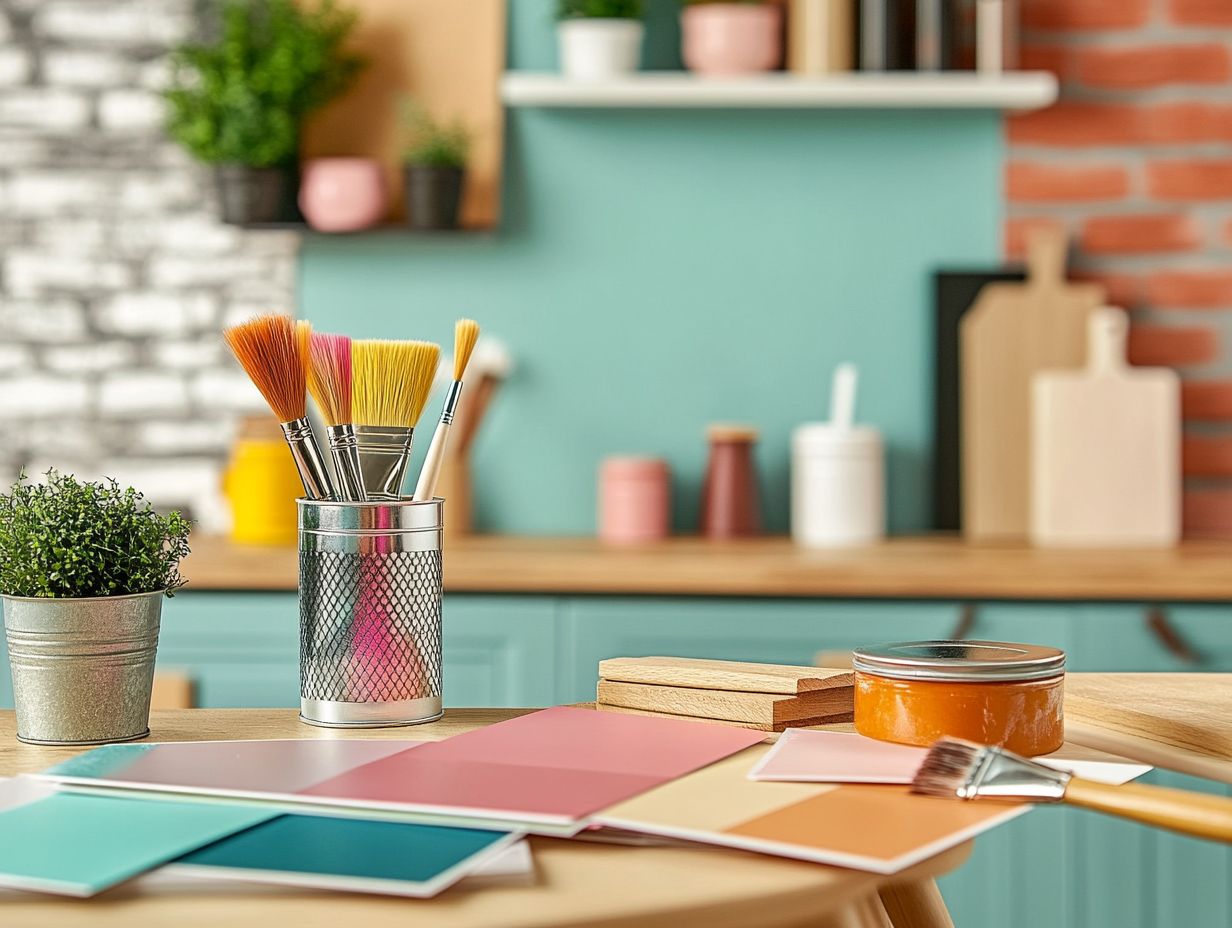
When choosing the right paint for your kitchen, think about the level of durability, color, sheen, and ease of cleaning. Kitchens are high-traffic areas prone to heat, moisture, and stains, so it’s important to choose a paint that can withstand these conditions.
Should I use a specific type of paint for my kitchen?
Yes, it’s recommended to use either a semi-gloss or high-gloss paint for your kitchen. These types of paint have a higher sheen, which refers to how shiny or matte the paint looks. They are more durable, easier to clean, and resistant to moisture and stains. Plus, they reflect more light, making the space appear brighter.
What colors are best for a kitchen?
Choosing a color for your kitchen is essential. Neutral colors like white, gray, or beige are classic and versatile options.
Bolder colors such as blue, green, or red can add personality. The best color is one that you love and fits your style.
Do I need to use a primer before painting my kitchen?
Using a primer is crucial when painting your kitchen. It creates a smooth base for the paint, ensuring better coverage.
If your walls have stains or imperfections, a primer helps to hide them.
How can I make my kitchen paint last longer?
To make your paint last, properly prepare the walls. Clean them thoroughly and use a primer.
Using high-quality paint and applying two coats ensures a durable finish. Regular cleaning also extends the life of your kitchen paint.
Can I use the same paint for my kitchen cabinets and walls?
Yes, you can use the same paint for both cabinets and walls. However, choose paint designed for cabinets for a durable finish.
Consider different colors or sheens for the cabinets to add contrast to your kitchen design.
